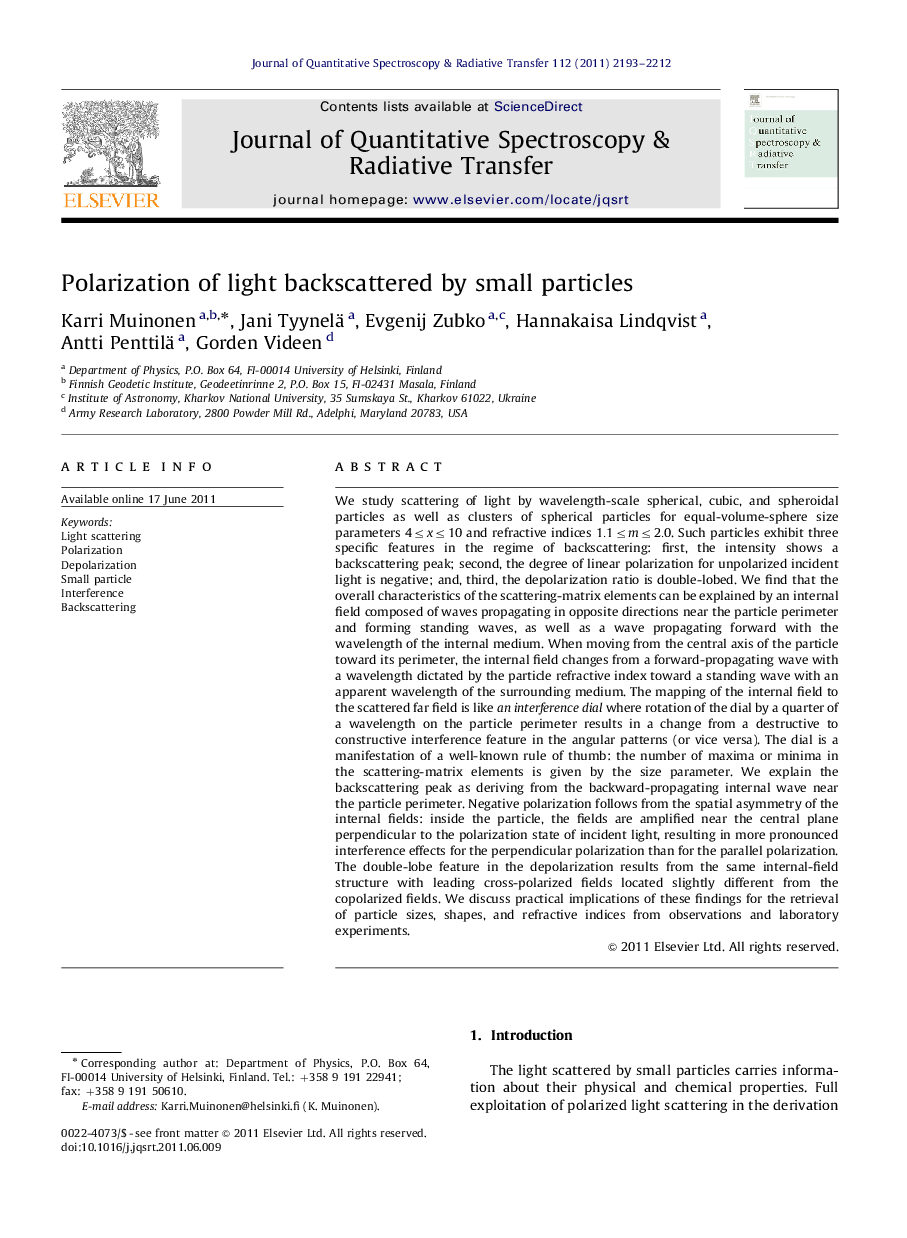| کد مقاله | کد نشریه | سال انتشار | مقاله انگلیسی | نسخه تمام متن |
|---|---|---|---|---|
| 5429730 | 1397368 | 2011 | 20 صفحه PDF | دانلود رایگان |

We study scattering of light by wavelength-scale spherical, cubic, and spheroidal particles as well as clusters of spherical particles for equal-volume-sphere size parameters 4â¤xâ¤10 and refractive indices 1.1â¤mâ¤2.0. Such particles exhibit three specific features in the regime of backscattering: first, the intensity shows a backscattering peak; second, the degree of linear polarization for unpolarized incident light is negative; and, third, the depolarization ratio is double-lobed. We find that the overall characteristics of the scattering-matrix elements can be explained by an internal field composed of waves propagating in opposite directions near the particle perimeter and forming standing waves, as well as a wave propagating forward with the wavelength of the internal medium. When moving from the central axis of the particle toward its perimeter, the internal field changes from a forward-propagating wave with a wavelength dictated by the particle refractive index toward a standing wave with an apparent wavelength of the surrounding medium. The mapping of the internal field to the scattered far field is like an interference dial where rotation of the dial by a quarter of a wavelength on the particle perimeter results in a change from a destructive to constructive interference feature in the angular patterns (or vice versa). The dial is a manifestation of a well-known rule of thumb: the number of maxima or minima in the scattering-matrix elements is given by the size parameter. We explain the backscattering peak as deriving from the backward-propagating internal wave near the particle perimeter. Negative polarization follows from the spatial asymmetry of the internal fields: inside the particle, the fields are amplified near the central plane perpendicular to the polarization state of incident light, resulting in more pronounced interference effects for the perpendicular polarization than for the parallel polarization. The double-lobe feature in the depolarization results from the same internal-field structure with leading cross-polarized fields located slightly different from the copolarized fields. We discuss practical implications of these findings for the retrieval of particle sizes, shapes, and refractive indices from observations and laboratory experiments.
⺠Polarization explained in the backscattering regime. ⺠Interference rules devised for nonspherical particles. ⺠Method devised for interference analyses of scattering.
Journal: Journal of Quantitative Spectroscopy and Radiative Transfer - Volume 112, Issue 13, September 2011, Pages 2193-2212